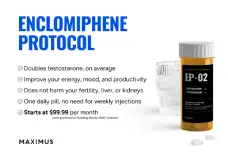O.K. MM
You clearly have this down pat

SO for someone like me that is "medical reports" challenged

When would one choose the "Gold Standard" over the simple test?
I would guess that there must be some type of discriminator that would point to the "Gold Standard" such as too low T or too high T, or some medical condition where you want the MOST accurate reading???
As stated in the update 2018 An Endocrine Society Clinical Practice Guideline
Regarding Total Testosterone
- TT concentrations are measured using radioimmunoassay, immunometric assays, or liquid chromatography-tandem mass spectrometry
- there is considerable interassay and interlaboratory variability in TT measurements
- similar large interassay and interlaboratory variability occurs with FT measurements
- the variability in T measurements is partly due to calibrator differences and to biotin interference in some immunoassays
- since 2010, the CDC has provided an accuracy-based standardization program for T (CDC Hormone Standardization Program for Testosterone)
- although several commercial laboratories, some assay manufacturers, and some academic laboratories are now CDC certified, most T immunoassay kit manufacturers and local hospital-based laboratories have not been certified
* Liquid chromatography-tandem mass spectrometry assays for TT generally offer higher concentration of specifity, sensitivity, and precision (especially in the low range) than do most immunoassays
- clinicians should ideally measure TT using a CDC-certified assay or an assay verified by an accuracy-based external quality control program
Regarding TT the liquid chromatography-tandem mass spectrometry assay is considered the GOLD STANDARD
Regarding Free Testosterone
- local laboratories usually do not have accurate and reliable assays for FT measurement
- therefore, clinicians should use a reliable reference laboratory for these tests
- clinicians should measure FT using the equilibrium dialysis method performed under standardized conditions
- if equilibrium dialysis is not available for measuring FT, clinicians should estimate FT concentration using a formula that accurately calculates FT concentrations using TT, SHBG, and albumin concentrations
- the estimates of FT, regardless of the formula used, are predicted upon accurate measurements of TT, SHBG, and albumin
- recent studies using modern biophysical techniques suggests that SHBG circulates as a dimer and that binding of T to SHBG is a multistep process that involves an allosteric interaction between the two binding sites on the SHBG dimer, such that the affinities of the two sites are not equivalent
- estimates of FT that use an allosteric model provide close approximations of measures using equilibrium dialysis
- furhter investigation is needed to determine the preferred method for routinely estimating FT concentrations in clinical populations
- FT measurements by direct tracer analog immunoassays are frequently available in local and some reference laboratories, but these direct immunoassays are inaccurate and should not be used
- a major difficulty in determining FT concentrations is the lack of standardization regarding FT assays, resulting in variability in the lower limit of the reference ranges quoted by different laboratories
- given the uncertainties in the methods of calculations and variations in reference intervals, laboratories are encouraged to establish their own specific reference ranges for FT measurement by equlibrium dialysis and calculated FT (preferably calculated against the equilibrium dialysis method)
Regarding FT the equilibrium dialysis method is considered the GOLD STANDARD














